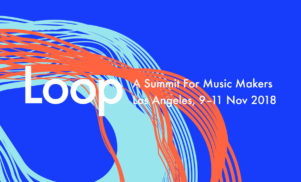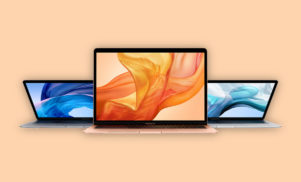Apple’s new MacBook Air, Mac mini and iPad Pro are likely to disappoint producers once again. Scott Wilson takes a look at the specs and hidden costs of its most ‘affordable’ product line in several years.
Today, Apple launched brand new MacBook Air, Mac mini and iPad Pro models as part of a wide-ranging product refresh. It’s the first time in several years that the long-neglected Air and mini lines have been updated, an attempt by Apple to fill a gap at the less expensive end of the Mac OS scale after focusing on its expensive MacBook and MacBook Pro lines.
If you’re a photography enthusiast, amateur video editor, blogger or any of the other demographics Apple regularly markets to with what are increasingly becoming lifestyle products, the appeal of these light, powerful and affordable(ish) new products is clear, especially in the face of its $1,499 MacBook Pro with Touch Bar. If you’re using a Mac for music production though, the appeal of Apple’s new product line is far more opaque. Aside from brief mentions of Logic Pro X and GarageBand in today’s showy keynote presentation, as well as a performance from Lana Del Rey at the end, music as a creative pursuit was barely mentioned at all.
It’s strange that Apple continues to neglect one of its biggest user categories, especially considering the popularity of GarageBand, which is likely to be the first experience many people have of making music with a computer, phone or tablet. But it’s also not that surprising: this is the same company that removed the headphone jack from its phone in the name of ‘progress’ and removed traditional USB ports from its MacBook Pro line despite widespread support for them among producers with MIDI controllers, audio interfaces and modern synthesizers. The MacBook Pro is also too expensive for most bedroom producers and the MacBook far too underpowered for anyone wanting to do anything more than basic recording and light editing.
Maybe this has something to do with the way that the demographic of musicians using Macs has changed. A decade ago, “laptop musician” was still a category in itself, a niche that Apple was probably happy to exploit as the relative underdog. Now, in a world where most people has a smartphone and you can upload music straight to SoundCloud, more or less everyone making music is a laptop musician in some way – be that for creating, recording or sharing music – and the need to market to the comparatively small group of people using Max/MSP or even Ableton Live probably isn’t that important to Apple.
So where does this leave the professional and even intermediate level producers considering whether to stick with Apple or jump ship to Windows? Unfortunately the answer isn’t a simple one. Today’s slate of new products is a very mixed bag for producers. Each product offers something that the professional or semi-professional producer will want, but probably not at the same time. And, despite Apple’s attempt to shore up the more ‘affordable’ end of its product offering, each one is going to cost you more than you think.
MacBook Air
The new MacBook Air is the most significant update to Apple’s base laptop since its launch in 2008. It has a new Retina display, thinner bezels, a spec boost and is also 0.21 pounds lighter than the previous model. In line with Apple’s other recent laptops, it gets rid of USB-A ports in favour of USB-C, though it does still have a headphone jack.
I had assumed Apple would eventually do away with the MacBook Air in favor of the lighter and less powerful MacBook, but its continued presence is welcome – not everyone wants a tiny 12″ screen or 256GB SSD. The new Macbook Air, however, isn’t as cheap as you’d expect. The base model is $1,199, which is only $100 less than the MacBook and only $100 less than the entry-level MacBook Pro.
How a computer is going to perform is obviously dependent on what software configuration you’re running, but there’s a significant difference between the processor on the Air and basic MacBook Pro (sans Touch Bar). On the Air, you get a 1.6GHz dual-core 8th-generation Intel Core i5 processor with Turbo Boost up to 3.6GHz, and on the Pro you get a 2.3GHz dual-core 7th-generation Intel Core i5 processor with Turbo Boost up to 3.6GHz. On paper it doesn’t look like a huge difference, but Pros have a larger cache and faster graphics processing, which means that even a basic Pro should be faster than a new Air.
When you looks closer at the components involved in both and how the machines are built, the $100 saving starts to look even less appealing. No matter how you approach it, $1,199 for a computer that will probably start to show its age in a year or two isn’t a decision to make lightly. If you upgrade the RAM to 16GB then it’s a different matter, but that’s an extra $200.
The primary reason to choose the Air as a casual music-making computer is going to be portability, but as a studio machine or something running a complex live setup, it may struggle depending on how much you’re planning on throwing at it. Its battery life is also better than a Pro – Apple says you’ll get up to 12 hours of web browsing and 13 hours of video playback on the new MacBook Air, which is up to three hours more than a new Pro.
Overall though, if you’re buying a new Mac laptop to make music, it probably makes more sense to save a bit more and put it towards a Pro.
Mac mini
Apple’s new Mac mini is the first update to the no-frills desktop system since the end of 2014. As such, the increase in power is significant, with a quad-core 8th Gen Intel processor as standard and an option to go to six-core Intel Core i7 versions. The base version also comes with a 128GB SSD and 8GB of RAM as standard. All versions can go up to 64GB of RAM and 2TB of SSD storage.
If you don’t feel like splashing $2,999 on a Mac Pro or $1,299 on an iMac and the computer will be living in your studio, the new mini is probably going to be worth a look. This is especially true for anyone who doesn’t want to leave the Mac ecosystem but also doesn’t want to spend over $1,000 to do so. However, it’s worth noting that the i3 chip that comes with the $799 mini as standard is Intel’s entry-level option, so you’ll probably want to go for the i5 or upgrade to an i7 if you’re going to use it for serious studio work.
Again though, once you begin tweaking the specs to add a better processor or more RAM, the price begins to creep up. Adding a six-core i5 processor and a modest 16GB RAM boost to the basic mini brings the cost up to $1,299 – better value for money than a MacBook Pro or new MacBook Air, but still at a price that’s beyond the means of most. You’ll also need a keyboard, mouse and monitor, though these can be bought fairly inexpensively if you don’t buy them from Apple; a lot of people will also have old peripherals they can dig out to keep costs down.
There’s also the matter of SSD drive capacity and price in the mini. To a certain extent, you expect expensive, low capacity SSD options on a laptop because they’re portable devices. But in a desktop device, the tradeoff just isn’t worth it. The 2014 Mac mini didn’t have an SSD, but you did get 500GB of regular hard drive storage in a machine that could be picked up for $499 until very recently. More people use cloud services in 2018, so may not need the local storage now, but musicians need the hard drive space for soft synths, VSTs, backups, samples and audio recordings. 128GB is just not enough for producers, so if you do decide to go for a new Mac mini, expect to budget for additional storage.
iPad Pro
Apple’s new iPad Pro is a gorgeous device. It’s the kind of device that will probably have a lot of lapsed iPad users (myself included) seriously consider finding a use for one again. As with last year’s iPhone X, the new iPad Pro is a complete redesign of the iPad, which gets rid of the physical home button and adds dual cameras at the top of the (now very thin) bezel for a new Face ID function that will log you using facial recognition.
Apple’s presentation made a lot of how the new iPad Pro is considerably more powerful than the majority of notebooks on the market and how it can replace your laptop, but it’s still a device that runs iOS, which means that it’s largely useless for musicians using DAWs like Ableton Live, Cubase or Bitwig Studio and most of NI’s products. So, whether you’ll have any use for it largely depends on how invested you are in iOS as a music-making platform.
Thanks primarily to the App Store and a dedicated community of developers, iOS is hands down the best platform for mobile music-making, but its popularity is partly down to the relative affordability of the early iPads and the proliferation of iPhones. The new iPad Pro starts at $799 for an 11-inch model and goes up to $999 for 12.9 inches; if you start boosting the specs that can go up to a whopping $1,749. A basic iPad – which also supports the Apple Pencil – can be purchased for $329.
It’s difficult to see how the new iPad Pro could benefit music-makers looking for a new tablet to run the odd sequencer app or synth. Most iOS apps for musicians aren’t terribly resource-heavy, so if you want to upgrade then an entry-level iPad will likely serve you just as well.
There’s one thing that could prove a game-changer, and that’s Apple’s switch to USB-C over its old Lightning ports. Apple says that this will offer a direct high-performance connection to accessories such as a camera, so it’s not out of the question that you may be able to connect MIDI controllers in the future without needing a Lightning to USB adaptor. You can also charge your iPhone from the iPad Pro over USB-C, which opens up the potential for powering synths from the device. But it also loses the headphone jack, which will be remarkably inconvenient, not just for mobile producers, but for the iPad party DJs used to hooking up their tablet using the aux cable.
Should I stick with Apple?
Sadly, producers are likely to be just as disappointed and confused by Apple’s latest product line-up as they were when the MacBook Pro with Touch Bar arrived in late 2016. In theory, these devices should have plugged the gap in Apple’s product line for more affordable products. In practice, they’ve just made the task of picking a new device more confusing for musicians, with specs and price points that are largely similar. Apple has created the illusion of increased choice, but actually offered very little to separate its proliferation of options around the $1,200 mark.
More significantly though, these devices perhaps kill the idea of the ‘budget’ Apple computer once and for all. With the introduction of the new MacBook Air, there is no new sub-$1,000 Apple laptop, just one very outdated model. Apple’s new mini is just not a great deal next to a similarly specced Windows machine. Is it worth sticking with Apple to make music? I haven’t reached crunch point myself yet, but it’s getting harder every year to say yes.
Scott Wilson is FACT’s tech editor. Find him on Twitter
Read next: Native Instruments unveils nine new products across Maschine, Traktor and Komplete lines





























